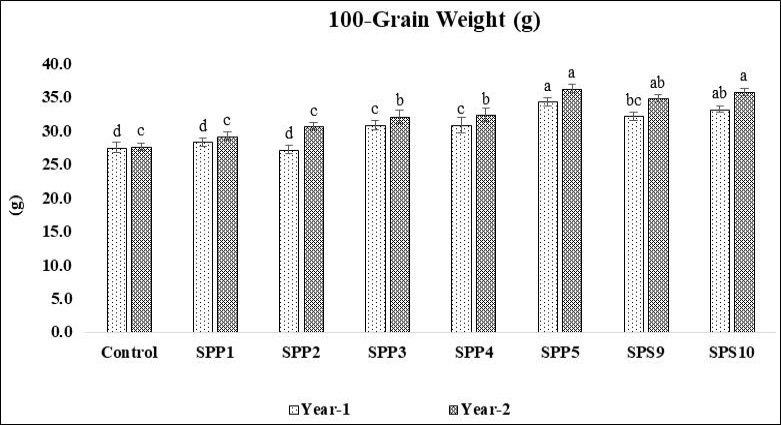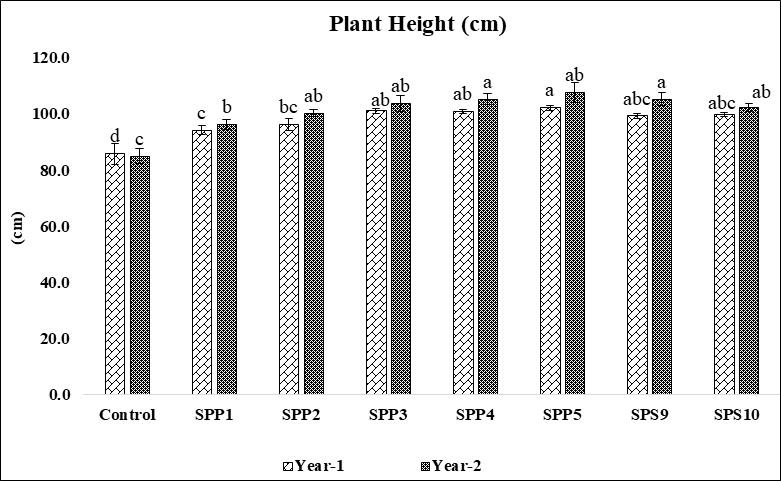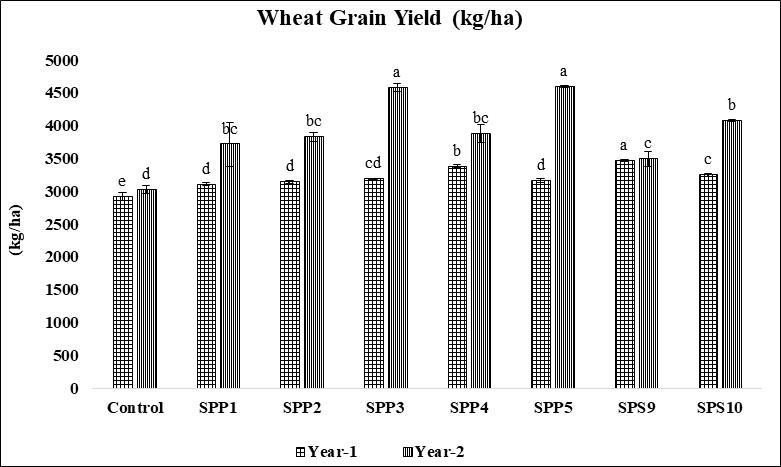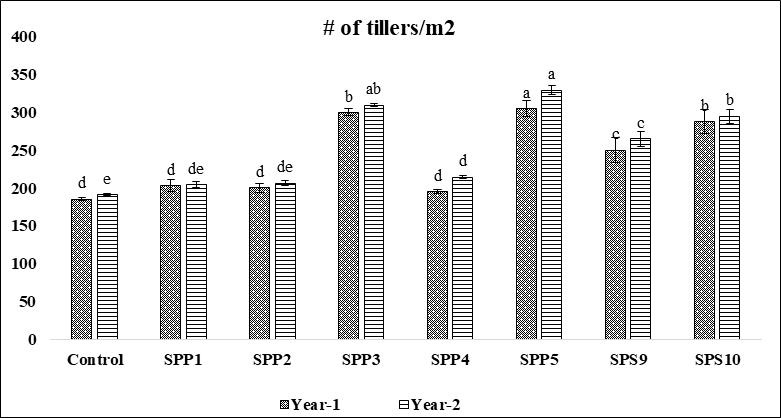Isolation, Purification and Application of Siderophore Producing Bacteria to Improve Wheat Growth
Isolation, Purification and Application of Siderophore Producing Bacteria to Improve Wheat Growth
Shabana Ehsan1*, Aneela Riaz2, Muhammad Amjad Qureshi1, Abid Ali1, Ifra Saleem3, Muhammad Aftab3, Khalid Mehmood4, Fakhar Mujeeb1, Muhammad Asif Ali1, Hina Javed1, Fraza Ijaz1, Anwar-ul-Haq5, Khaliq-ur-Rehman3 and M. Usman Saleem4
Effect of different isolates of siderophore producing bacteria on wheat grain weight (g). Mean bars sharing the same letters are statistically similar at p≤0.05.
Effect of different isolates of siderophore producing bacteria on wheat plant height (cm). Mean bars sharing the same letters are statistically similar at p≤0.05.
Effect of different isolates of siderophore producing bacteria on wheat spike length (cm). Mean bars sharing the same letters are statistically similar at p≤0.05.
Effect of different isolates of siderophore producing bacteria on wheat grain yield (kg/ha). Mean bars sharing the same letters are statistically similar at p≤0.05.
Effect of different isolates of siderophore (SP) producing bacteria on wheat No. of tillers/m2. Mean bars sharing the same letters are statistically similar at p≤0.05.












